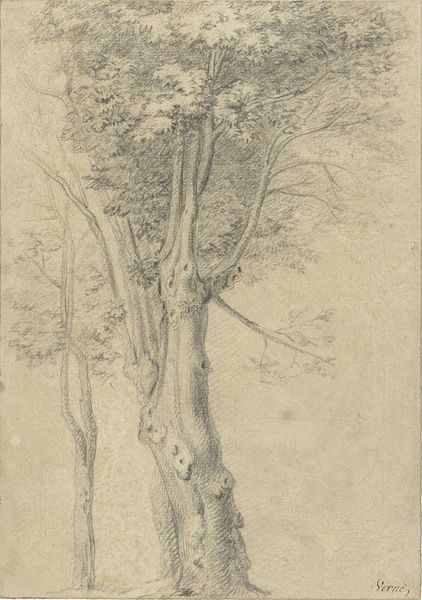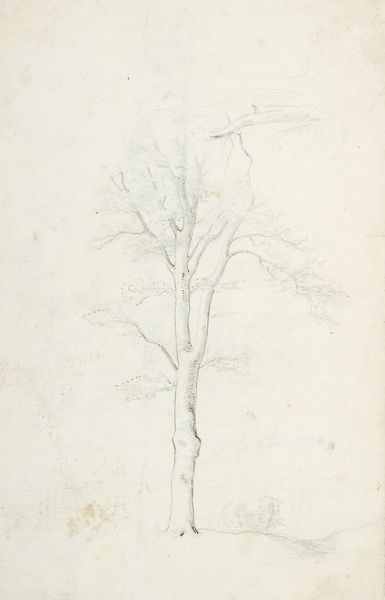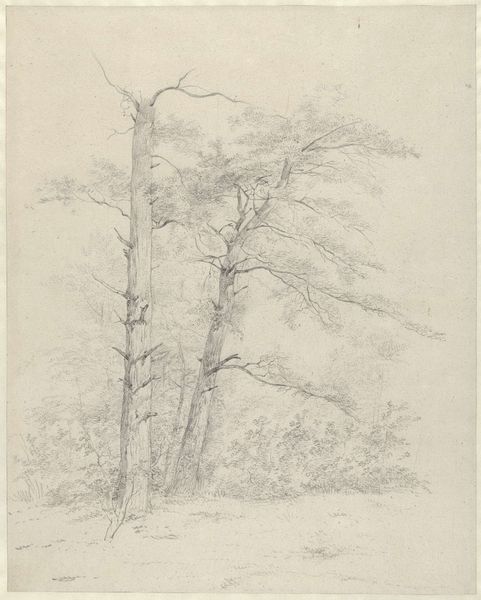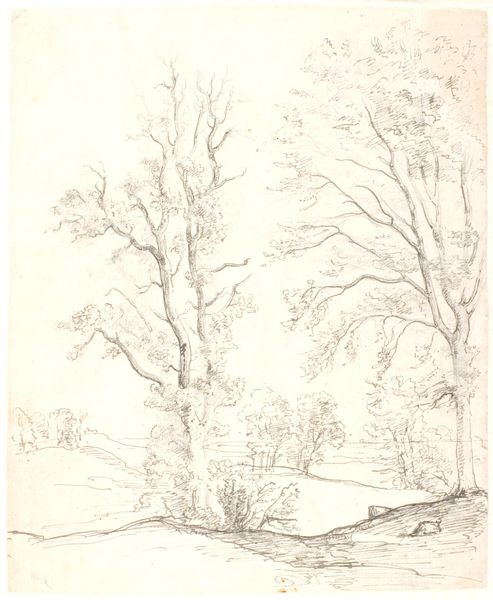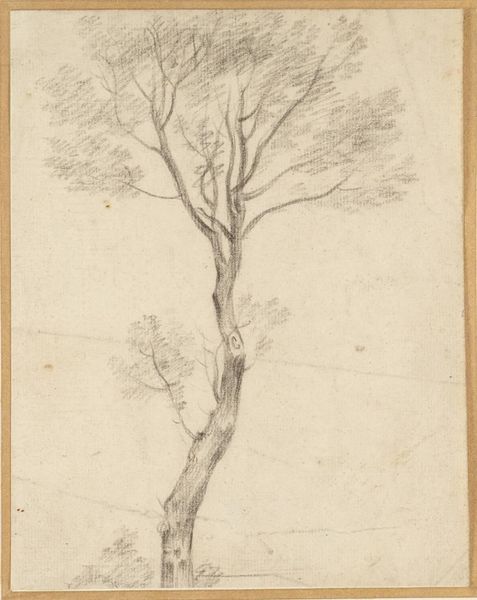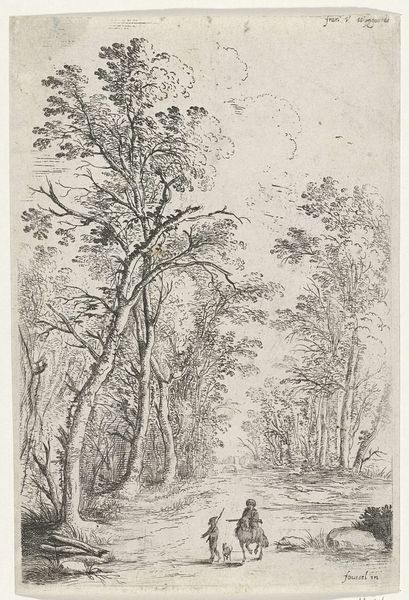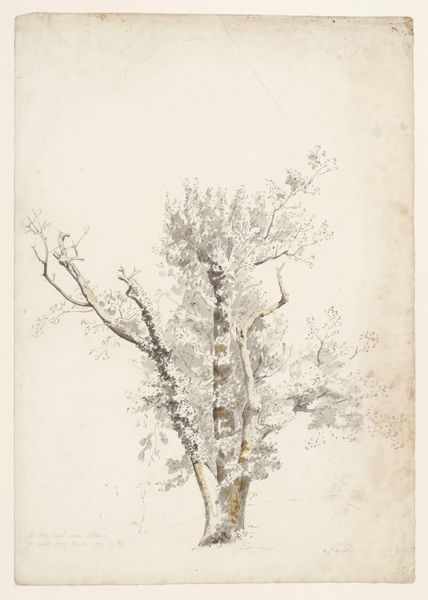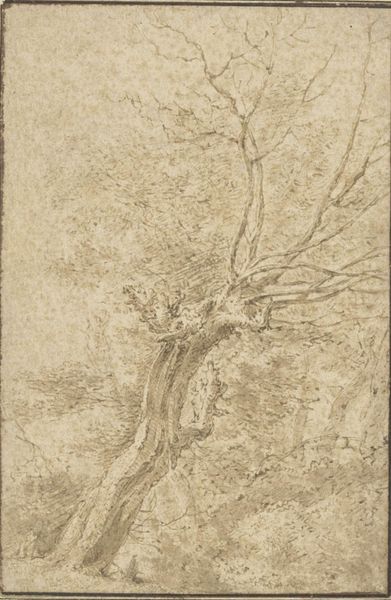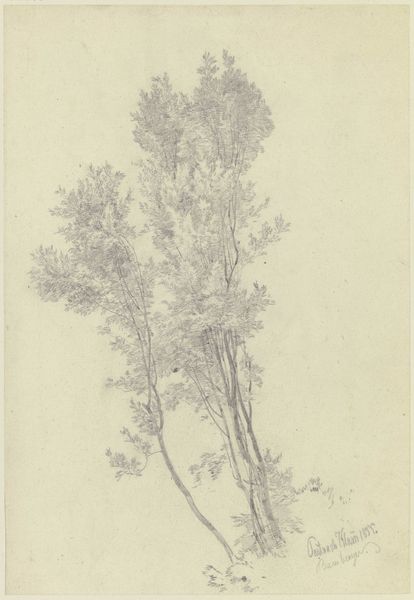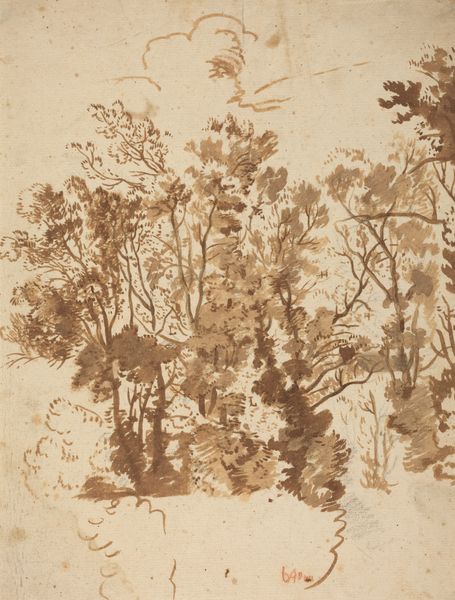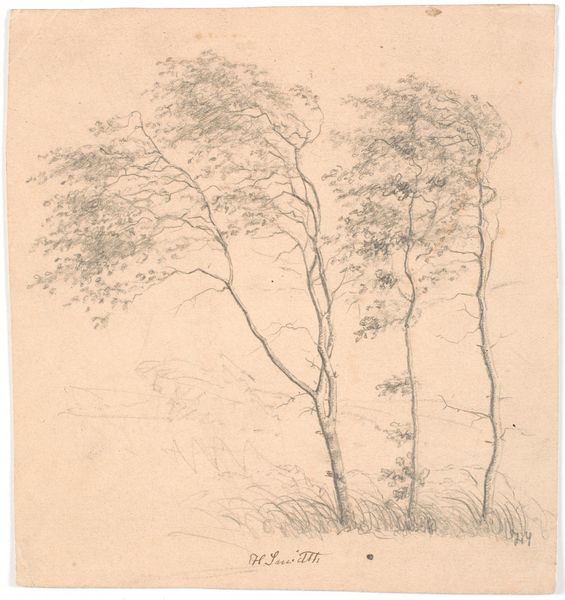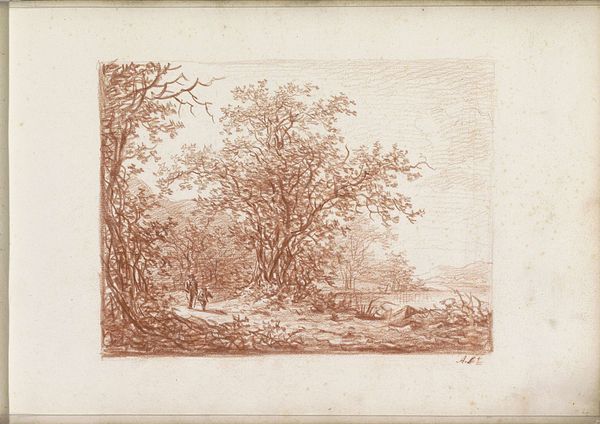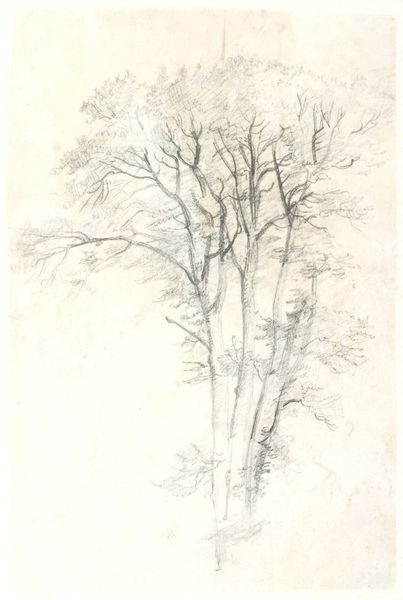
Dimensions: height 340 mm, width 235 mm
Copyright: Rijks Museum: Open Domain
Charles François Daubigny made this drawing of slender trees, its date unknown, using a traditional drawing implement - chalk. The artist seems to have focused his attention on the textures of nature, and in this study, Daubigny engages with the inherent qualities of chalk – its ability to create both fine lines and soft shading. Look closely, and you’ll see how he uses the chalk to capture the light filtering through the leaves, giving the trees a sense of depth and volume. Drawings like this weren't just about technical skill, they were also part of a larger cultural movement. The 19th century saw a growing interest in nature and the outdoors, partly as a response to industrialization and urbanization. Artists like Daubigny turned to the countryside for inspiration, finding beauty in the everyday landscapes that were often overlooked. So, when we look at this drawing, we're not just seeing trees on paper. We’re seeing a reflection of broader social and cultural values, and the artist's connection to the world around him. By understanding the materials, processes, and context, we can appreciate the full meaning of this work.
Comments
No comments
Be the first to comment and join the conversation on the ultimate creative platform.
